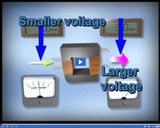
In a step up transformer a smaller amount of voltage enters the primary coil, and a larger amount of voltage leaves the secondary coil.
- Subject:
- Science
- Provider:
- Utah Education Network
- Author:
- Visual Learning Company
- Date Added:
- 02/28/2010

Resources created or licensed by the Utah Education Network

In a step up transformer a smaller amount of voltage enters the primary coil, and a larger amount of voltage leaves the secondary coil.
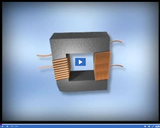
A transformer is composed of two coils of wire - a primary coil and a secondary coil. The coils are wrapped around a metal structure. When an alternating current enters the primary coil, a magnetic field is created.
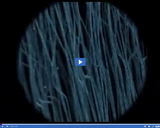
Depicts helium atoms in a balloon.
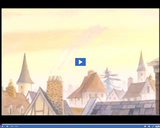
In midnight visits clothed in mystery, a pair of elves restore a poor shoemaker and his wife to prosperity. The classic fairy tale of elfin magic that generations of children have loved, made new by Jim LaMarche's stunning paintings. Narrated by Patrick Stewart, with music by John Jennings.

This presentation includes information and links from Katie Blunt's and Camille Cole's UCET 2024 presentation exploring the transformative world of open educational practice (OEP): As educators, institutions, and learners increasingly grapple with the challenges of access, equity, and engagement, OEP and public practice can help reshape traditional educational paradigms by leveraging open resources, digital platforms, and collaborative methodologies. Discover how tools like UEN's eMedia, Open Author, and Canyons School District's MTSS framework can help you break down the barriers to knowledge and foster a vibrant and inclusive learning community. Get ready to dive into real-world examples of OEP in action shared by a panel of experts: Kiera Beddes (Jordan School District), Katie Blunt (Utah Education Network), Camille Cole (Canyons School District), Diana Meiser (Weber State University/Utah Academic Library Consortium), and Braxton Thornley (Utah Education Network). Their insights will leave you inspired, enlightened, and equipped to revolutionize education in the digital age!
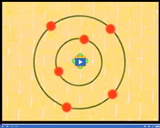
This animation depicts bonds between atoms. Within bonds is a certain amount of energy referred to as chemical energy.

Matter is composed of atoms.
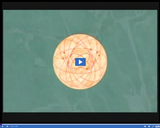
Energy released from the nucleus is the most concentrated form of energy.
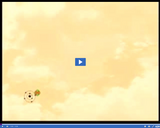
Two models of the nucleus of an atom, where nuclear energy is stored.

Rapid Climate change is a big problem. Luckily, it's one we can tackle. But it will take the work of every nation on earth, especially the ones with lots of power plants, cars, and factories, and other things that use lots of energy. As you can see, China and The United States make most of the carbon dioxide. That means that the leaders of those nations, along with the others, have a special responsibility to reduce carbon dioxide and keep the planet livable in the future
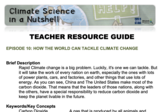
Overview: Rapid Climate change is a big problem. Luckily, it's one we can tackle. But it will take the work of every nation on earth, especially the ones with lots of power plants, cars, and factories, and other things that use lots of energy. As you can see, China and The United States make most of the carbon dioxide. That means that the leaders of those nations, along with the others, have a special responsibility to reduce carbon dioxide and keep the planet livable in the future
This teacher resource guide will help teacher present the "How the World Can Tackle Climate Change" video in their classrooms.
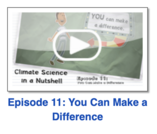
Rapid Climate Change affects the whole planet. But you might be surprised to know that one person, meaning you, can make a big difference. Doing your part to help the planet cool down starts with understanding something called your "carbon footprint". Your carbon footprint is the amount of carbon dioxide created by the stuff you do in your daily life. If you're like most Americans, you consume energy for things like heat, light, surfing the web, watching TV, and getting from place to place in a car. Plus, the stuff you buy and use takes energy to make and deliver, so you're consuming energy when you, say, buy a hamburger, or a kiwi.
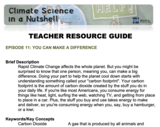
Overview: Rapid Climate Change affects the whole planet. But you might be surprised to know that one person, meaning you, can make a big difference. Doing your part to help the planet cool down starts with understanding something called your "carbon footprint". Your carbon footprint is the amount of carbon dioxide created by the stuff you do in your daily life. If you're like most Americans, you consume energy for things like heat, light, surfing the web, watching TV, and getting from place to place in a car. Plus, the stuff you buy and use takes energy to make and deliver, so you're consuming energy when you, say, buy a hamburger, or a kiwi.
This teacher resource guide will help teachers present the "You Can Make a Difference" video in their classrooms.

Planet Earth. It sure is beautiful, and it's also very unique and special, because under its thin atmosphere, it supports life. But there's a problem. Did you know that the Earth is sick? It has come down with a fever. In fact, the last ten years were the hottest ever recorded. This never-before-seen warming is part of something scientists call “Climate Change.” But what could cause our whole planet to get sick? And what is climate, anyway? Have humans played a role in changing it? What’s bad about climate change, and how can we stop it from getting worse? In this video series, we answer these questions and more.
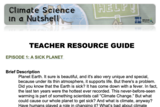
Overview: Planet Earth. It sure is beautiful, and it's also very unique and special because under its thin atmosphere it supports life. But there's a problem. Did you know that the Earth is sick? It has come down with a fever. In fact, the last ten years were the hottest ever recorded. This never-before-seen warming is part of something scientists call “Climate Change.” But what could cause our whole planet to get sick? And what is climate, anyway? Have humans played a role in changing it? What’s bad about climate change, and how can we stop it from getting worse? In this video series, we answer these questions and more. This teacher resource guide will help educators use the "A Sick Planet" video in the classroom.
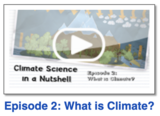
People are experiencing climate, which is related to the weather, but there’s an important difference. That difference is really just a matter of time. Weather happens day to day, even hour to hour, and is still pretty unpredictable. Climate happens over longer periods of time -- 30 years and longer -- and is usually predictable. In a nutshell, climate can be described as the average weather over time.

People are experiencing climate, which is related to the weather, but there’s an important difference. That difference is really just a matter of time. Weather happens day to day, even hour to hour, and is still pretty unpredictable. Climate happens over longer periods of time -- 30 years and longer -- and is usually predictable. In a nutshell, climate can be described as the average weather over time. This teacher resource guide will help teachers present the "What is Climate?" video to students.
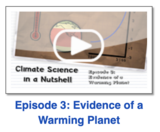
You might not know it, but many of the things we take for granted come from the work of scientists. Take an x-ray machine, for example. It can peer into our bodies, helping doctors identify broken bones. Thousands of scientists around the world have developed tools to see changes to the Earth over time. Just like an x-ray, these tools help us learn things we might not be able to see otherwise. For example, Paleoclimatologists examine air bubbles trapped in ice, to determine climate conditions from thousands of years ago. Paleoclimatologists know that the Earth warmed up about five degrees Celsius starting about 15,000 years ago. That warming happened pretty gradually, over about 5,000 years. The problem we have now is that the Earth is warming up nearly that much over just a couple of hundred years. It’s as if the stove was suddenly turned up.

Overview: You might not know it, but many of the things we take for granted come from the work of scientists. Take an x-ray machine, for example. It can peer into our bodies, helping doctors identify broken bones. Thousands of scientists around the world have developed tools to see changes to the Earth over time. Just like an x-ray, these tools help us learn things we might not be able to see otherwise. For example, Paleoclimatologists examine air bubbles trapped in ice, to determine climate conditions from thousands of years ago. Paleoclimatologists know that the Earth warmed up about five degrees Celsius starting about 15,000 years ago. That warming happened pretty gradually, over about 5,000 years. The problem we have now is that the Earth is warming up nearly that much over just a couple of hundred years. It’s as if the stove was suddenly turned up. This teacher resource guide will help teachers present the "Evidence of a Warming Planet" in their classrooms.
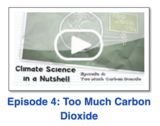
One thing that makes life on Earth possible is a thin layer of gases called the atmosphere. It holds in the air we breathe and protects us from the cold of outer space. When energy in the form of light reaches us from the Sun, it streams through the atmosphere, making plants grow and lighting up our days. In addition to light, the Sun also delivers heat, which warms the planet. But much of that heat is reflected back towards space.